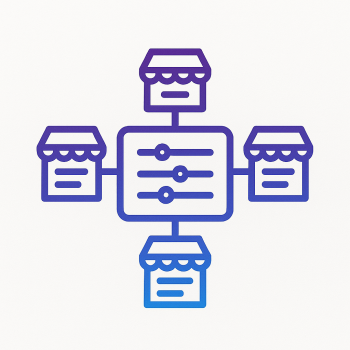The Ultimate Guide to Magento 2's Built-in Security Features (And When You Need More)

Let’s keep it real: Magento 2 ships with a solid set of built‑in security controls, but “solid” doesn’t mean “complete for every use case.” If you’re running a store — small or large — you need to understand what Magento protects out of the box, what it doesn’t, and when it’s time to add third‑party tools or managed services (or both). This post walks you through Magento 2’s native security features, maps them to common vulnerabilities, gives a practical audit checklist with commands and snippets, and explains concrete cases where buying extra security makes sense. I’ll be relaxed and direct, like talking to a colleague who’s getting their hands dirty for the first time.
Quick overview: What Magento 2 protects natively
Out of the box Magento 2 includes a number of defensive measures you should know about before you reach for extra tools:
- CSRF protection via form keys — Magento uses form_key tokens to protect forms and state‑changing actions from cross‑site request forgery.
- Output escaping and template sanitization — many helper functions escape output to reduce XSS vectors if you follow best practices.
- Database layer protection — Magento’s ORM and DB adapter use prepared statements and parameter binding to limit SQL injection risks when used correctly.
- Authentication and password hashing — passwords are salted and hashed using secure algorithms configured in the framework.
- Admin area controls — admin routing, configurable admin URL, granular ACL (roles and permissions), session lifetimes, and (since Magento 2.4) Two‑Factor Authentication (2FA) modules for the Admin.
- ReCAPTCHA integration — Magento provides built‑in modules to enable reCAPTCHA for admin and storefront forms (login, contact, etc.).
- HTTPS & cookie settings — configuration options to enforce secure cookies, set cookie scopes, and require HTTPS on storefront / admin.
- File permissions guidance and recommended server configurations — the docs explain safe filesystem ownership/permissions and show how to serve static content from pub/ with proper rules.
- Security update path — Magento publishes security advisories and fixes via Composer packages; updating Magento keeps you covered by official patches.
That’s a good baseline. But there are gaps (rate limiting, advanced bot detection, WAF, payment fraud scoring) where native features don’t cover all attack scenarios. We’ll dig into specifics below.
Detailed comparison: Native features vs common vulnerabilities
Let’s walk vulnerability by vulnerability, and see what Magento handles and where you need to watch out.
1) Cross‑Site Request Forgery (CSRF)
Magento uses form_key tokens in POST forms and verifies them server‑side. If your custom modules render state‑changing forms without using Magento’s form helpers, you can accidentally bypass CSRF protection.
- Native mitigation: form_key tokens generated per session; validation built into controllers using form validation helpers.
- What to check: ensure custom templates and APIs validate the form_key or use framework form classes.
- Example fix: when creating a custom form, include the form key:
<form action="<?= $block->getUrl('mymodule/action/post') ?>" method="post">
<input name="form_key" type="hidden" value="<?= $block->getFormKey() ?>" />
...
</form>
2) Cross‑Site Scripting (XSS)
Magento encourages escaping output in templates using escapeHtml(), escapeHtmlAttr() and other helpers. However, custom code, third‑party themes and malformed inputs are the usual culprits.
- Native mitigation: escaping helpers and structured layout rendering.
- What to check: templates for raw echoing of variables, JS templates that inject unescaped values, admin inputs that are not sanitized.
- Example safe echo:
// In a .phtml template
<?php /** @var $block \Magento\Framework\View\Element\Template */ ?>
<?= $block->escapeHtml($someVariable) ?>
// For attributes
<div title="<?= $block->escapeHtmlAttr($title) ?>">
3) SQL injection (SQLi)
Magento’s use of Prepared Statements and its ORM helps tremendously, but raw SQL in custom modules can be dangerous.
- Native mitigation: DB adapters & binding APIs. Avoid direct string concatenation in queries.
- What to check: review custom resource models and repository code for dynamic SQL assembled with user input.
- Example safe query:
// Use parameter binding
$connection = $this->resourceConnection->getConnection();
$sql = 'SELECT * FROM ' . $this->resourceConnection->getTableName('catalog_product_entity') . ' WHERE sku = :sku';
$bind = ['sku' => $skuFromRequest];
$result = $connection->fetchRow($sql, $bind);
4) Remote Code Execution & Arbitrary File Uploads
Magento prevents direct PHP upload via the pub/ media pipeline, but poorly validated file upload endpoints or lax server configs can still be exploited.
- Native mitigation: validated upload mechanisms, media storage separation, and recommended file permissions.
- What to check: eliminate direct PHP execution in writable directories (no exec in pub/media), validate file types, and use storage services (S3) where possible.
- Server tip: ensure your webserver does not execute PHP from upload folders. Example nginx rule below.
# nginx snippet: deny execution in pub/media
location ~ ^/pub/media/.*\.(php|phtml)$ {
return 403;
}
5) Brute force / credential stuffing
Admin accounts are a prime target. Magento includes configurable password policies and 2FA modules. Also, reCAPTCHA helps for frontend login and contact forms.
- Native mitigation: 2FA, password strength controls, reCAPTCHA integration.
- What to check: enforce 2FA for all admin users, change /admin URL from default, ensure lockout policies are active.
# Check 2FA module status
bin/magento module:status Magento_TwoFactorAuth
# Set admin URL in env.php or via CLI
# In app/etc/env.php set 'backend' => ['frontName' => 'myadmin_123']
6) Payment and PCI concerns
Magento itself is built to support PCI compliance, but how you process and store card data matters more than Magento’s feature set. Native advice: avoid storing raw card data, use payment gateways or hosted payment pages, and ensure TLS and encryption keys are correct.
- Native mitigation: integration hooks for secure payment modules and tokenization support if your payment provider offers it.
- What to check: confirm that payment modules are certified; don’t switch to a custom direct‑card storage approach without a full PCI audit.
Practical security audit checklist for your Magento 2 store (step‑by‑step)
Here’s a hands‑on checklist you can run through in roughly this order. I’ll include commands and config checks so you can copy‑paste them into your terminal.
1) Quick version and module health
# Magento version
bin/magento --version
# Show installed packages (composer)
composer show | grep magento
# Check for available updates
composer outdated "magento/*"
Make sure you’re on a supported release and that security patches from the vendor are applied. If not, plan an upgrade/patch window.
2) Check file system permissions
# Recommended basics (run as deploy user)
find var vendor pub/static pub/media app/etc -type f -exec chmod g+w {} +
find var vendor pub/static pub/media app/etc -type d -exec chmod g+ws {} +
chown -R :www-data .
# Ensure app/etc/env.php is not world readable
chmod 660 app/etc/env.php
Adjust user/group names for your stack (www-data, apache, nginx, magento). App/etc/env.php contains the encryption key and DB creds — protect it.
3) Check HTTPS and cookie settings
# In Magento admin or via CLI you can set base URLs to https
bin/magento config:set web/secure/use_in_frontend 1
bin/magento config:set web/secure/use_in_adminhtml 1
bin/magento config:set web/secure/base_url https://yourdomain.com/
# Cookie secure flag
bin/magento config:set web/cookie/cookie_secure 1
Always enforce HTTPS on the whole site and use HSTS at the server level (nginx or CDN).
4) Verify 2FA and admin protections
# Check if Two‑Factor module is enabled
bin/magento module:status Magento_TwoFactorAuth
# If you need to enforce 2FA, configure via admin > Security > 2FA or manage the module config
Require 2FA for any account that has admin privileges. Replace the default admin username and obfuscate the admin path.
5) Check for unused or vulnerable modules
# List enabled modules
bin/magento module:status | sed -n 's/Enabled\s\+\(.*\)/\1/p'
# Search for known vulnerable packages in composer.lock
composer audit || true
# Or use security-checker tools (e.g., Roave security-advisories / SensioLabs)
Remove unused third‑party modules and keep your Composer dependencies tidy. Auditing composer.lock is essential to detect vulnerable libraries.
6) Scan for sensitive files in web root
# Simple checks
ls -la pub/ | grep -E "(install|setup|dev)"
# Make sure no backup files are in pub/ (db dumps, .sql, .tar, .zip)
find pub -maxdepth 2 -type f -name "*.sql" -o -name "*.tar.gz" -o -name "*.zip"
Publicly accessible backups or dev files are an easy win for attackers.
7) Security headers
Magento does not inject a full set of HTTP security headers by default — you should add them at the webserver/CDN layer. Example nginx block:
# nginx snippet for security headers
add_header X-Frame-Options "SAMEORIGIN" always;
add_header X-Content-Type-Options "nosniff" always;
add_header Referrer-Policy "no-referrer-when-downgrade" always;
add_header Content-Security-Policy "default-src 'self' https:; script-src 'self' 'unsafe-inline' https:; object-src 'none';" always;
add_header Strict-Transport-Security "max-age=31536000; includeSubDomains; preload" always;
Applying a sane Content Security Policy (CSP) helps prevent inline script injection and reduces the impact of XSS flaws.
8) Log & monitor
Enable and forward logs (system, exception, webserver) to a centralized logging/monitoring system. At minimum, monitor:
- Admin logins and failed attempts
- Large numbers of 404/500 errors
- Unusual spikes in checkout or API traffic
# Example: tail logs
tail -f var/log/system.log var/log/exception.log
# For failed admin login attempts check var/log/auth.log (system dependent)
9) Backups & recovery plan
Test backups regularly. A secure store without a tested recovery plan is just as vulnerable to operational failure as a breached one.
- Backup DB and media to a separate, secure location.
- Encrypt backups at rest.
- Run a restore drill quarterly.
10) External scans and pentesting
Use automated scanners but also schedule periodic manual penetration testing, especially after major upgrades or significant customizations.
Step‑by‑step code examples: small module to add security headers via an observer
If you don’t have control at the server level, you can still add headers from Magento PHP. Here’s a tiny example (module structure trimmed) that adds basic headers on every response. Use this only if you cannot change nginx/Apache or want an application-level fallback.
app/code/YourCompany/SecurityHeaders/etc/module.xml
<?xml version="1.0"?>
<config xmlns:xsi="http://www.w3.org/2001/XMLSchema-instance" xsi:noNamespaceSchemaLocation="urn:magento:framework:Module/etc/module.xsd">
<module name="YourCompany_SecurityHeaders" setup_version="1.0.0" />
</config>
app/code/YourCompany/SecurityHeaders/etc/frontend/events.xml
<?xml version="1.0"?>
<config xmlns:xsi="http://www.w3.org/2001/XMLSchema-instance" xsi:noNamespaceSchemaLocation="urn:magento:framework:Event/etc/events.xsd">
<event name="controller_action_postdispatch">
<observer name="yourcompany_add_security_headers" instance="YourCompany\SecurityHeaders\Observer\AddHeaders" />
</event>
</config>
app/code/YourCompany/SecurityHeaders/Observer/AddHeaders.php
<?php
namespace YourCompany\SecurityHeaders\Observer;
use Magento\Framework\Interception\InterceptorInterface;
use Magento\Framework\Event\ObserverInterface;
use Magento\Framework\App\Response\Http as ResponseHttp;
class AddHeaders implements ObserverInterface
{
public function execute(\Magento\Framework\Event\Observer $observer)
{
/** @var \Magento\Framework\App\Action\Action $controller */
$controller = $observer->getEvent()->getControllerAction();
$response = $controller->getResponse();
if ($response instanceof ResponseHttp) {
$response->setHeader('X-Frame-Options', 'SAMEORIGIN', true);
$response->setHeader('X-Content-Type-Options', 'nosniff', true);
$response->setHeader('Referrer-Policy', 'no-referrer-when-downgrade', true);
$response->setHeader('Strict-Transport-Security', 'max-age=31536000; includeSubDomains; preload', true);
}
}
}
Deploy with:
bin/magento module:enable YourCompany_SecurityHeaders
bin/magento setup:upgrade
bin/magento cache:clean
This is simple and avoids changing server configs if you lack access. But note: server‑level headers are still preferable for performance and reliability.
When third‑party security extensions become necessary — concrete use cases
Magento’s native features cover many basic threats, but there are concrete operational scenarios where extensions or external services are the right choice.
1) Advanced fraud protection
Scenario: you’re experiencing chargebacks and suspicious checkout behavior (multiple cards, mismatched geo, bot traffic). Magento has no built‑in machine‑learning fraud scoring engine.
Solution: integrate a fraud detection service or extension that offers device fingerprinting, behavioral scoring, velocity checks and advanced rules. These services can integrate with payment flows to block or flag high‑risk orders before settlement.
2) Web Application Firewall (WAF) / Bot mitigation
Scenario: your store is hit by credential stuffing or automated scraping. Native reCAPTCHA helps but is insufficient at scale.
Solution: a WAF (CDN integrated or dedicated) that provides rate limiting, geo‑blocking, and managed rule sets tuned for Magento. WAFs reduce noise, block known exploits, and often include virtual patching for zero‑day events.
3) PCI and Payment Security Enhancements
Scenario: you want to reduce PCI scope and offload card handling.
Solution: use extensions/gateways offering tokenization, hosted payment pages (redirects or iframes), and advanced encryption that minimize the card data your server ever sees. This is often cheaper and safer than attempting to be fully PCI compliant in‑house.
4) Real‑time monitoring, alerting and SOC integrations
Scenario: you need SLA guarantees, alerts, compliance reporting, and a place to push logs (SIEM).
Solution: security extensions that forward logs, integrate with SIEM, or tie your store into a managed security operation center (SOC) — useful for mid‑to‑large merchants with compliance needs.
5) Granular admin session & role hardening
Scenario: multiple agencies and developers need limited admin access.
Solution: extensions for session management that provide temporary tokens, fine‑grained action auditing and multi‑admin approval flows for critical operations.
Cost‑benefit analysis: native features vs paid extensions
Deciding whether to buy an extension is about risk, cost, and operational capacity. Here’s a simple framework:
- Low traffic, low revenue stores, and stores handling third‑party payments: Native features + good ops (patching, backups, 2FA) are often enough. The incremental ROI from paid tools is low.
- Growing stores with repeat customers, in high‑fraud verticals, or processing large volumes: Extensions for fraud protection, WAF, and monitoring quickly pay for themselves by preventing chargebacks and downtime.
- Enterprise stores with compliance needs (PCI Level 1, GDPR high sensitivity): Invest in dedicated security tooling, SIEM, or managed SOC. The cost of a breach or non‑compliance fine far exceeds yearly extension fees.
Example numbers (illustrative):
- Basic WAF / CDN: $50–$300/month — stops a large portion of automated attacks and reduces load.
- Fraud scoring subscription: $200–$2000/month depending on volume — reduces chargebacks and manual review costs.
- Managed security / SOC: $1k+/month — useful for large merchants and compliance.
Compare those costs to a single major outage, data breach or chargeback event — which can run into tens or hundreds of thousands of dollars. For many stores the math supports at least a CDN/WAF and a fraud tool.
Real examples: when native was enough, when not
Case A — Small niche brand: low traffic, sells low‑value items, payment via third‑party provider. They used native security, enforced 2FA for admin, kept patches up to date and used a reliable hosting provider. Outcome: no major incidents for years. Rationale: limited attack surface & low fraud incentive.
Case B — Growing marketplace: thousands of orders daily, high ticket items. They started with native protections but suffered credential stuffing and a spike in chargebacks. After adding a WAF + fraud scoring extension and forcing 2FA for vendors, fraud dropped 85% and manual reviews decreased dramatically. Outcome: ROI positive within months.
Operational best practices (wrap up of recommended daily/weekly checks)
- Daily: check error logs, failed cron jobs, and monitor alerts from your CDN/WAF.
- Weekly: review admin accounts, ensure unused accounts are removed, verify backups and perform a sample restore.
- Monthly: run automated vulnerability scans, review Composer deps for advisories, schedule security updates into your sprint.
- Quarterly: external penetration test and disaster recovery drill.
Also: document incident response steps. Know how to take the store offline safely (maintenance mode), freeze payments, and rotate credentials quickly.
Final recommendations — pragmatic checklist before buying extra tooling
- Make sure native basics are enforced: full HTTPS, updated Magento version, file permissions, 2FA for admin, reCAPTCHA where appropriate.
- Measure the problem: are you experiencing real fraud or bot traffic? Use logs and analytics to quantify the issue.
- Start with low friction controls: CDN/WAF, rate limiting, and reCAPTCHA. These often solve volume attacks cheaply.
- For payments and chargebacks: integrate a fraud scoring service or tokenized gateway — this reduces PCI scope and direct risk.
- If compliance or high revenue is at stake: invest in monitoring, SIEM, and managed security support.
Useful commands and quick reference (cheat sheet)
# Magento basic checks
bin/magento --version
bin/magento module:status
bin/magento cache:status
# Composer / dependencies
git status
composer show | grep magento
composer outdated
# File permissions
find var vendor pub/static pub/media app/etc -type f -exec chmod g+w {} +
# Configs
bin/magento config:set web/secure/use_in_frontend 1
bin/magento config:set web/secure/use_in_adminhtml 1
# Enable Two‑Factor
bin/magento module:enable Magento_TwoFactorAuth
bin/magento setup:upgrade
Closing notes
Magento 2 gives you a secure framework if you use its tools and follow best practices. But security is a stack — server, app, extensions, and operations must all be part of your plan. For a small store, native protections plus a solid maintenance routine are often enough. For growing or high‑risk merchants, a few targeted extensions (WAF, fraud scoring, tokenized payment flows) and managed monitoring are nearly always worth the cost.
If you’d like, I can review a concise list of your currently installed extensions and config and highlight the most critical gaps — share your module list and env.php sanitised (no passwords) and I’ll point out the low hanging fruit.
And if you use Magefine hosting or extension offerings, remember to check what security services your provider already bundles — sometimes a good hosting plan includes WAF or basic monitoring, which changes the cost‑benefit calculus.
Want a tailored checklist for your store? Tell me whether you’re a small indie shop or a large marketplace and I’ll give a prioritized action list.





